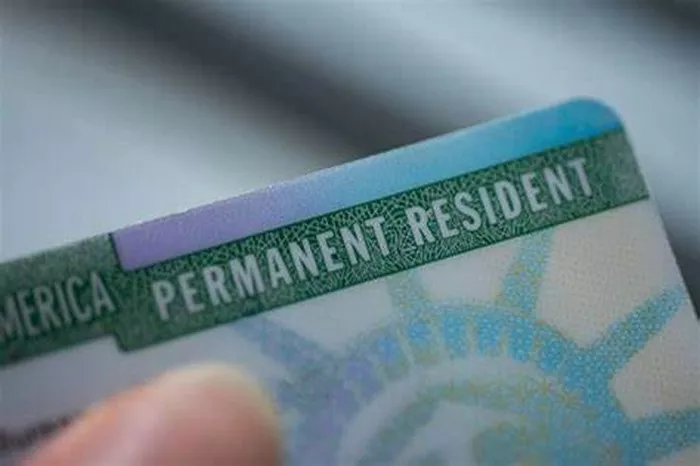Renewing a permanent resident card, commonly known as a Green Card, is a crucial process for individuals wishing to maintain their legal status in the United States. However, one of the most common concerns among Green Card holders is the time it takes to complete the renewal process. Understanding the timeline involved in renewing a permanent resident card is essential for planning and avoiding any lapses in immigration status. In this comprehensive guide, we’ll explore the various factors influencing the renewal timeline and provide insights into navigating the process efficiently.
Understanding the Renewal Process
Before delving into the timeframe for renewing a permanent resident card, it’s vital to understand the renewal process itself. The United States Citizenship and Immigration Services (USCIS) is responsible for processing Green Card renewals. The renewal process typically involves submitting Form I-90, Application to Replace Permanent Resident Card, along with supporting documents and the required fee.
Factors Influencing the Renewal Timeline
Several factors can influence the time it takes to renew a permanent resident card. Understanding these factors can help applicants anticipate potential delays and plan accordingly.
1. USCIS Processing Times: USCIS processing times can vary based on factors such as caseload, staffing levels, and procedural changes. While USCIS aims to process renewal applications promptly, fluctuations in processing times can occur.
2. Completeness and Accuracy of Application: The accuracy and completeness of the renewal application play a crucial role in processing times. Any errors or missing information can lead to delays as USCIS may request additional documentation or clarification.
3. Biometric Appointment Scheduling: As part of the renewal process, applicants are typically required to attend a biometric appointment to provide fingerprints, photographs, and signatures. The availability of appointments at USCIS Application Support Centers (ASCs) can impact the overall timeline.
4. Background Checks and Security Screening: USCIS conducts background checks and security screenings on renewal applicants. While most individuals pass these checks without issue, additional scrutiny may be required in certain cases, potentially prolonging the renewal process.
5. Request for Evidence (RFE) or Interviews: In some instances, USCIS may issue a Request for Evidence (RFE) or schedule an interview as part of the renewal process. Responding to an RFE or attending an interview can add time to the overall timeline.
6. External Factors: External factors such as changes in immigration policies, government shutdowns, or global events (e.g., pandemics) can also impact USCIS processing times and renewal timelines.
Average Processing Times
While USCIS provides estimated processing times for various immigration applications, including Green Card renewals, these estimates are subject to change. As of current date, the average processing time for Form I-90, Application to Replace Permanent Resident Card, is approximately 1.5-12 months.
It’s important to note that processing times can vary based on individual circumstances and USCIS workload. Applicants are encouraged to monitor USCIS processing times regularly and stay informed about any updates or changes.
Tips for Expedited Processing
While USCIS aims to process renewal applications in a timely manner, certain circumstances may warrant expedited processing. Applicants facing urgent travel needs, employment requirements, or humanitarian reasons may request expedited processing of their renewal application.
To request expedited processing, applicants must demonstrate a compelling reason for the request and provide supporting documentation. USCIS reviews expedite requests on a case-by-case basis, and approval is at the discretion of the agency.
Navigating the Renewal Process Efficiently
To expedite the renewal process and minimize delays, applicants can take several proactive steps:
1. Submit a Complete and Accurate Application: Ensure all required fields on Form I-90 are completed accurately, and include all necessary supporting documents.
2. Monitor USCIS Processing Times: Regularly check USCIS processing times to stay informed about current timelines and potential delays.
3. Attend Biometric Appointments Promptly: Schedule and attend biometric appointments at USCIS ASCs as soon as possible to prevent delays in processing.
4. Respond Promptly to Requests for Evidence: If USCIS issues an RFE, respond promptly with the requested information to avoid further delays.
5. Consider Expedited Processing: If facing urgent circumstances, explore the option of requesting expedited processing and provide compelling reasons and supporting documentation with the request.
6. Seek Legal Assistance if Necessary: If encountering difficulties or complexities in the renewal process, consider seeking assistance from an experienced immigration attorney or accredited representative.
Conclusion
Renewing a permanent resident card is a vital step for maintaining legal status in the United States. While the renewal process can vary in duration based on several factors, understanding the timeline and taking proactive steps can help applicants navigate the process efficiently. By submitting a complete and accurate application, attending biometric appointments promptly, and staying informed about USCIS processing times, individuals can minimize delays and ensure a smooth renewal process.


